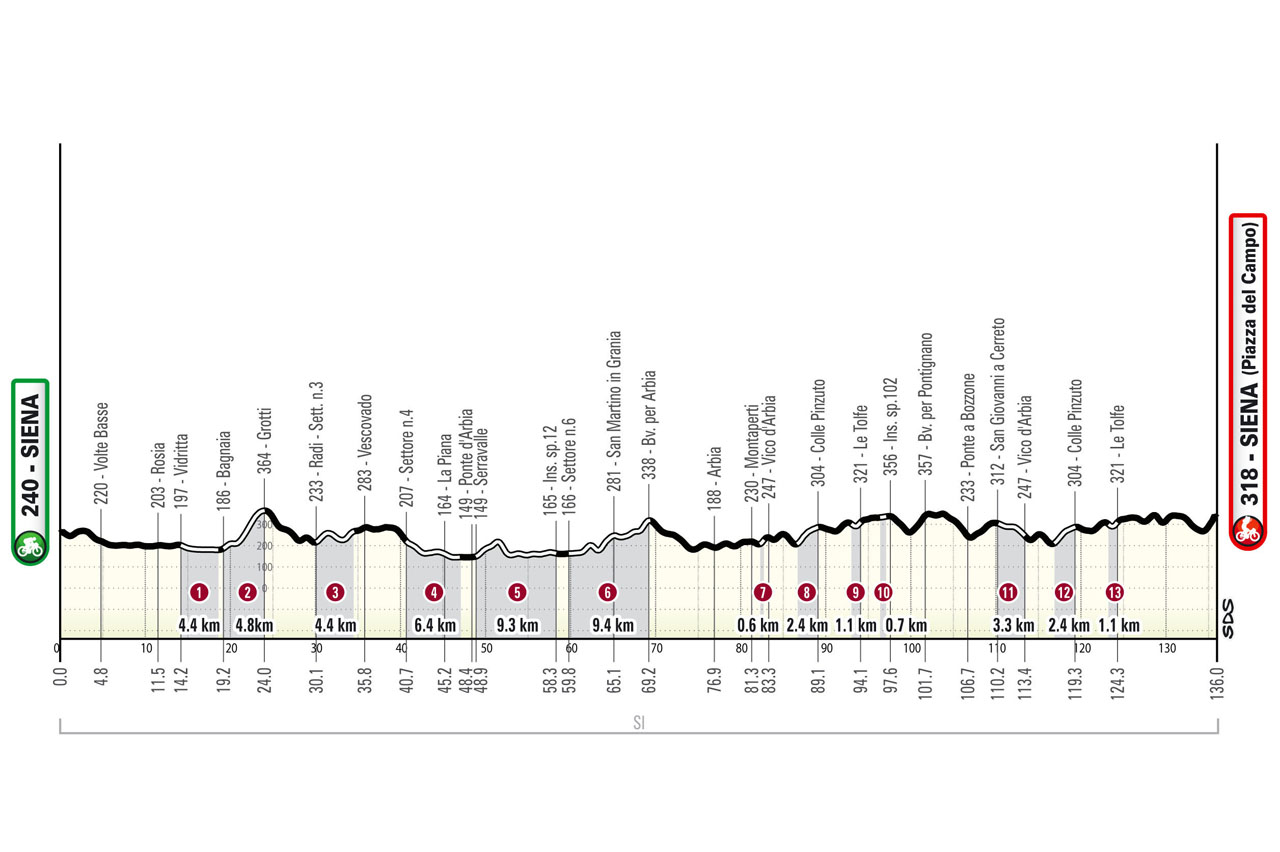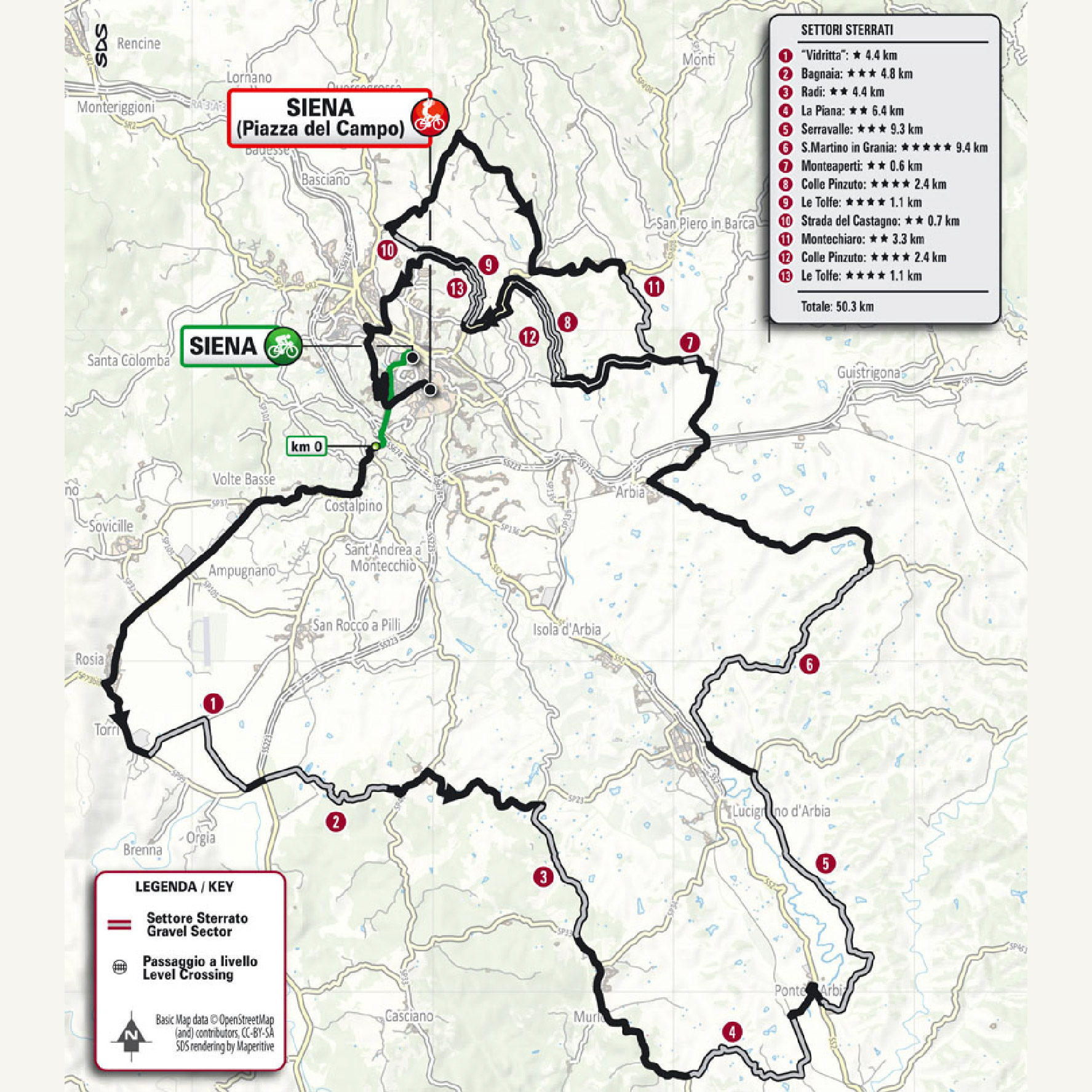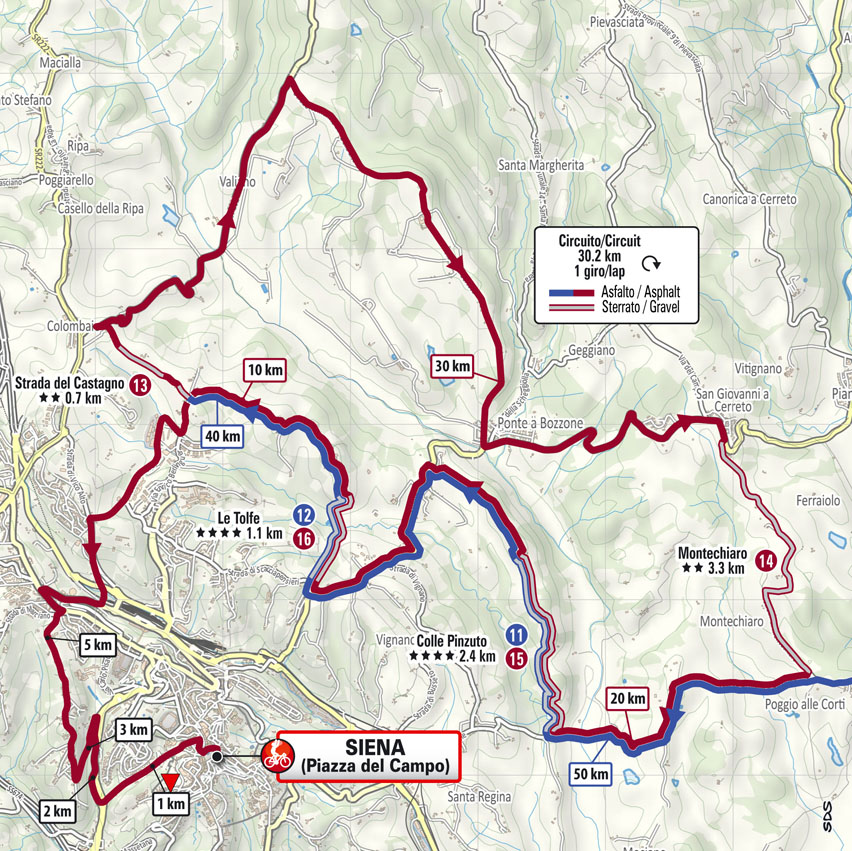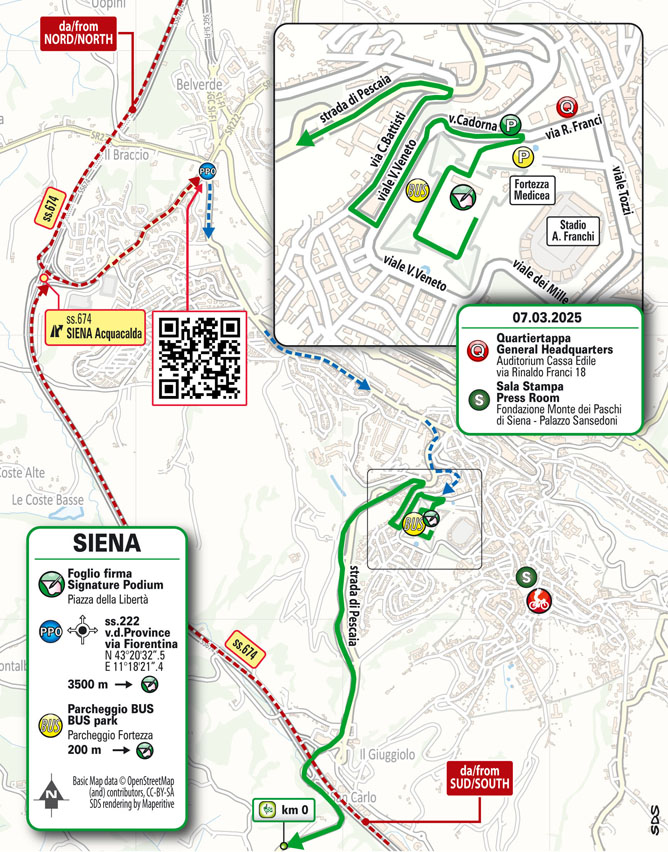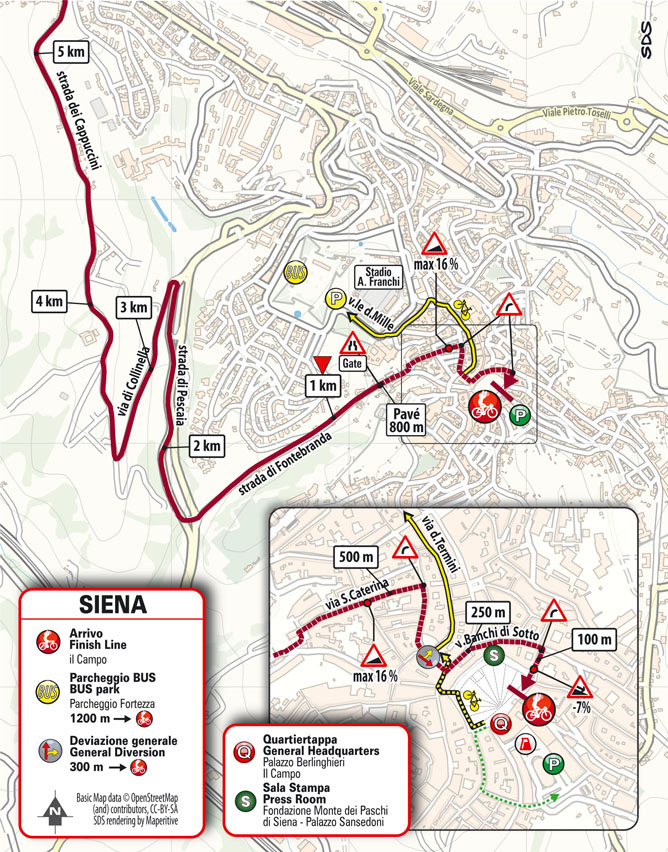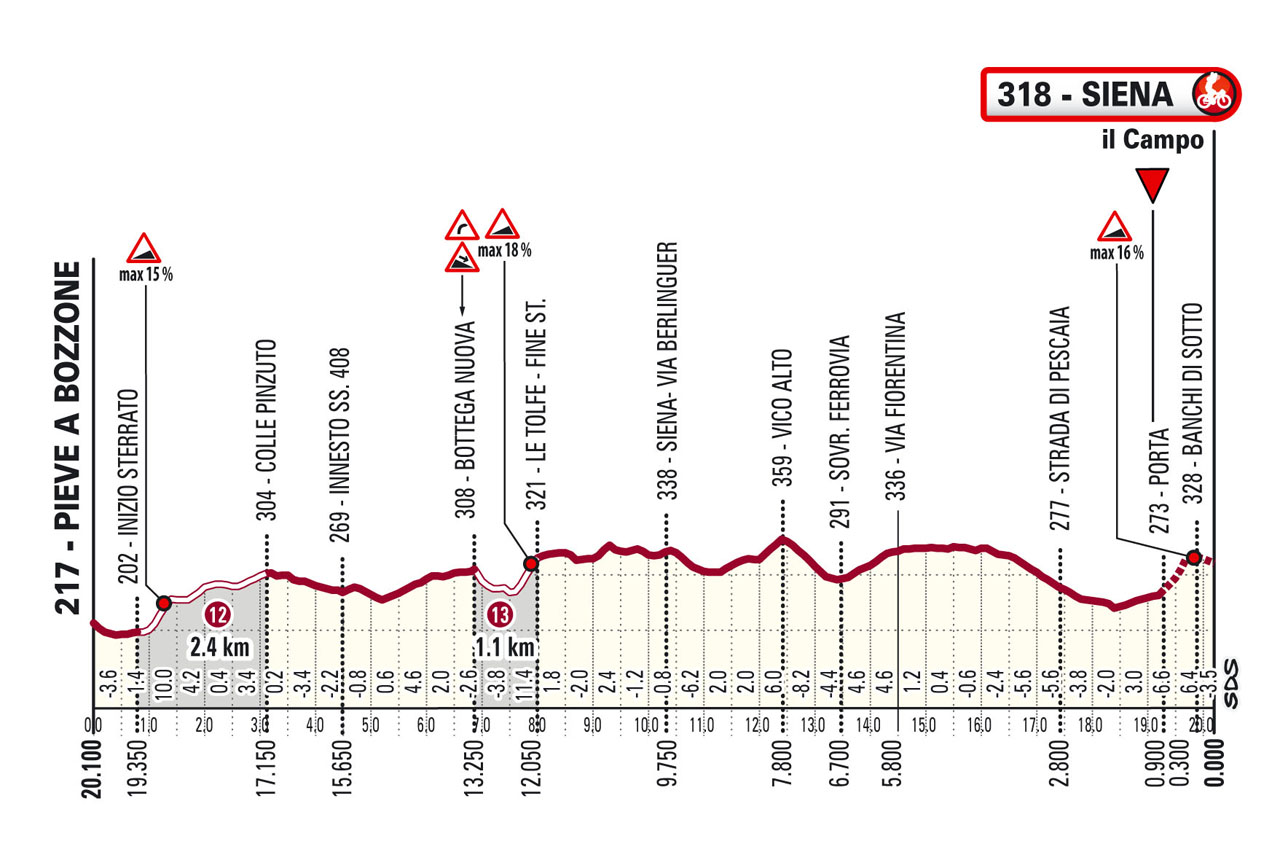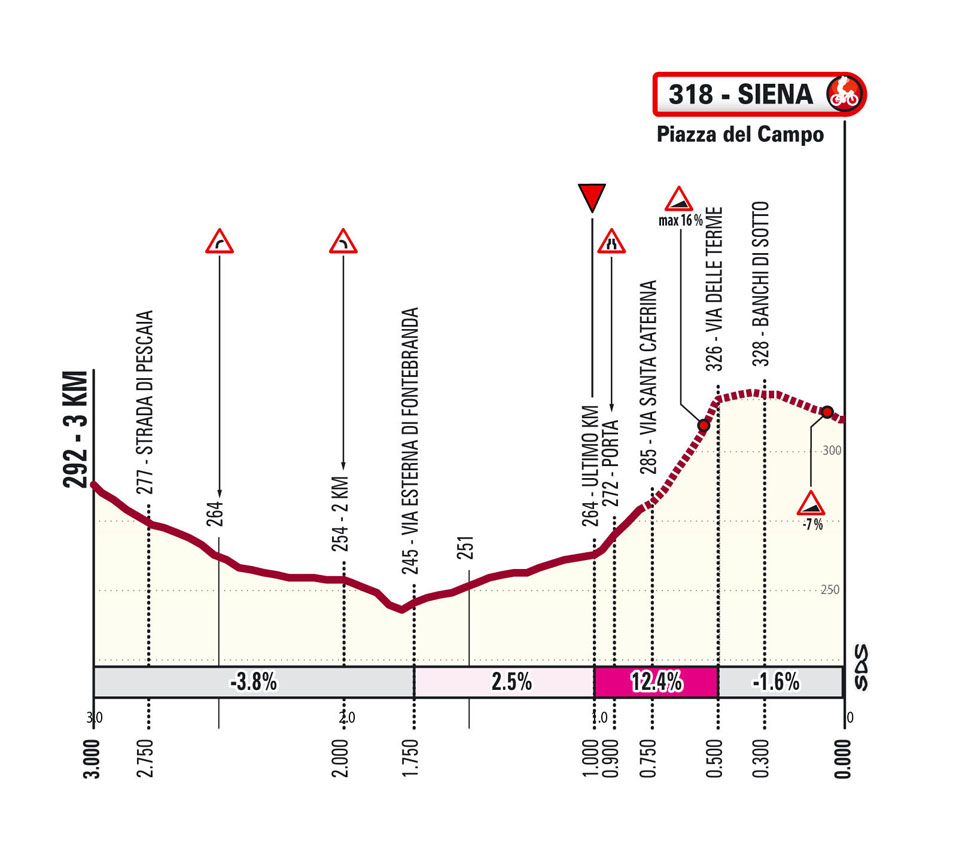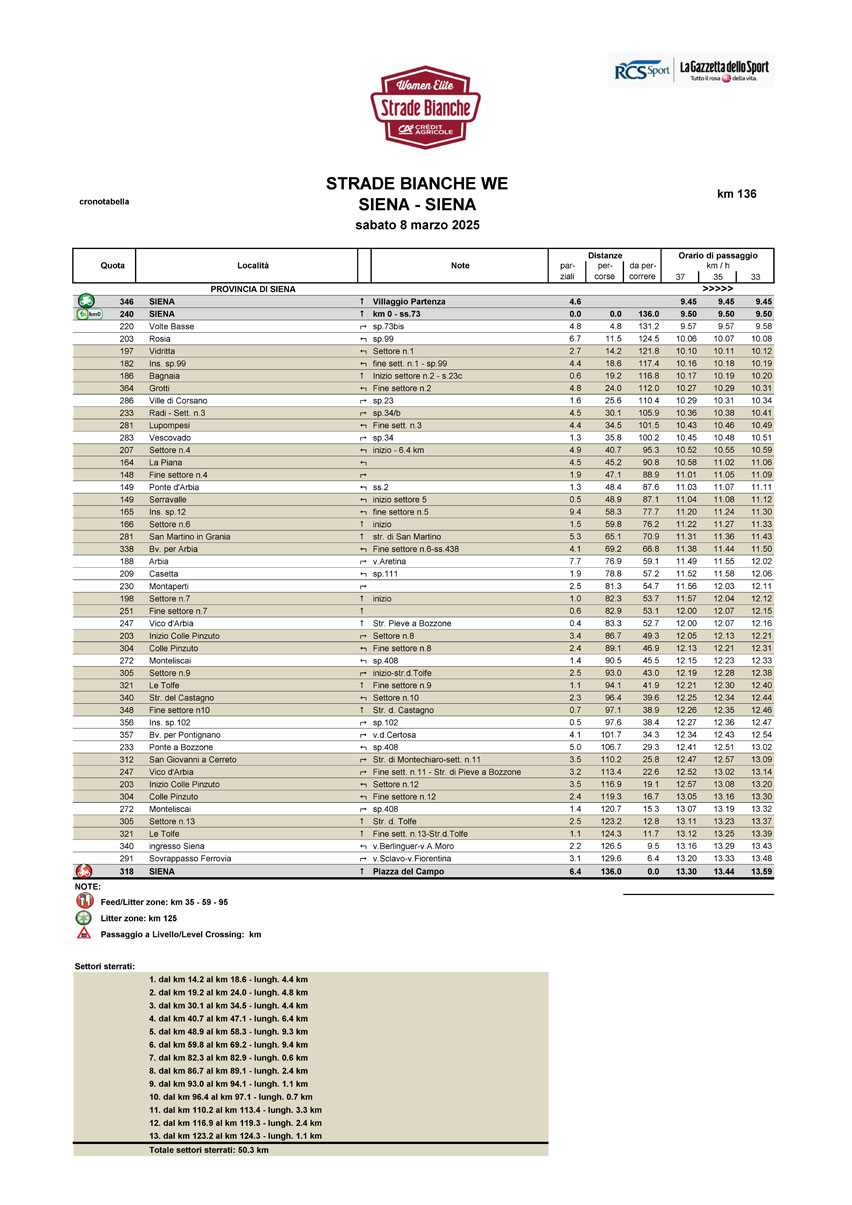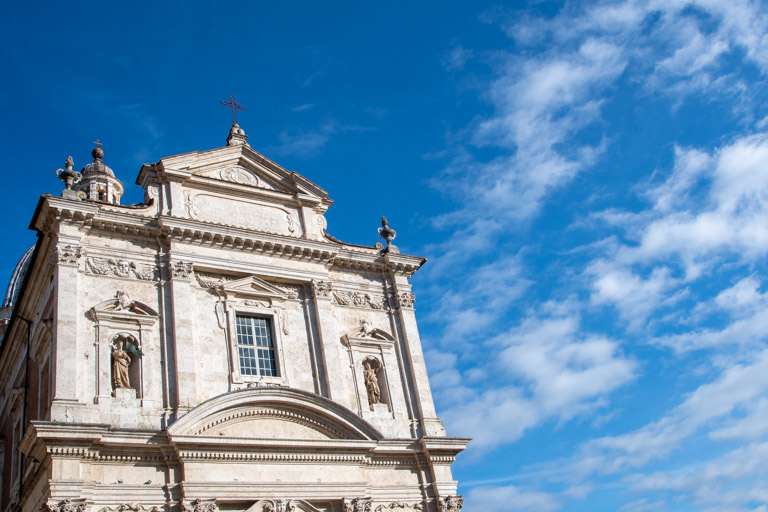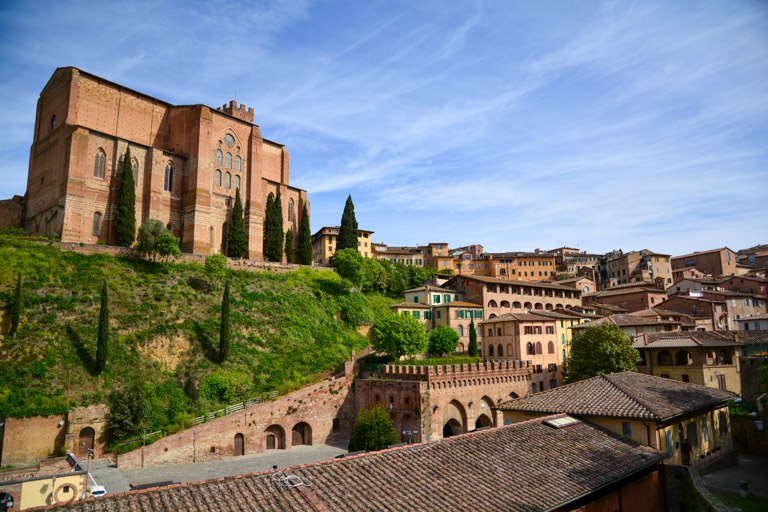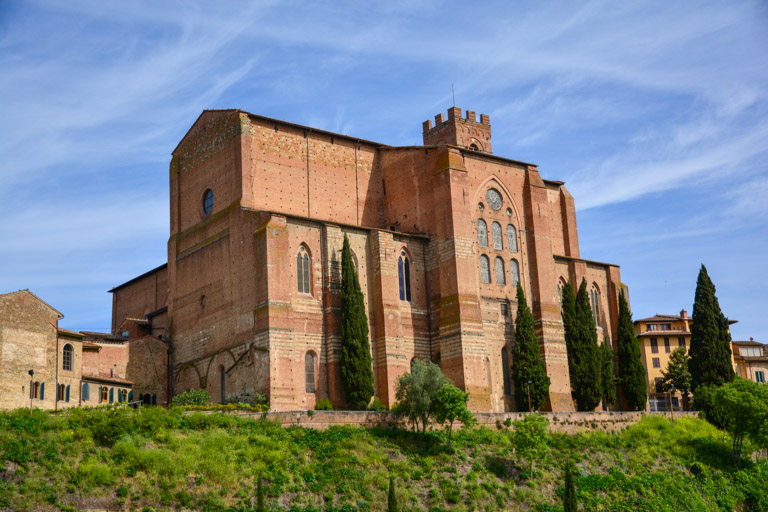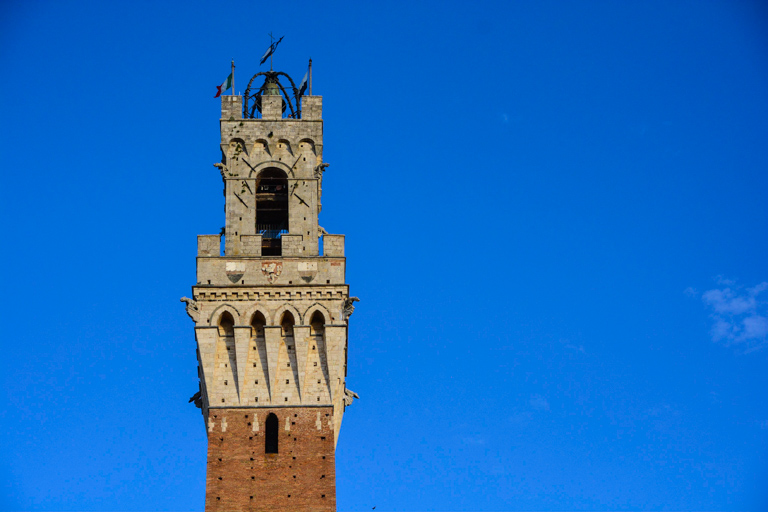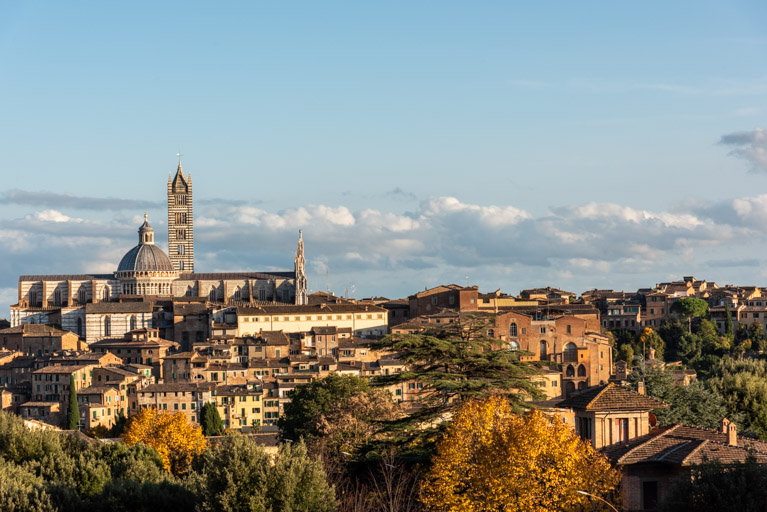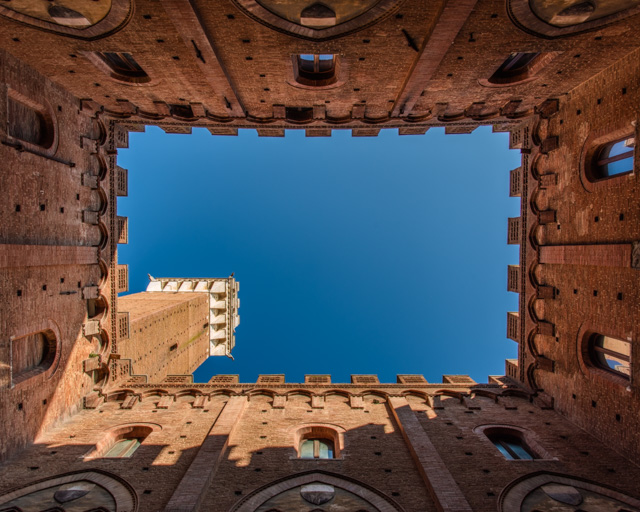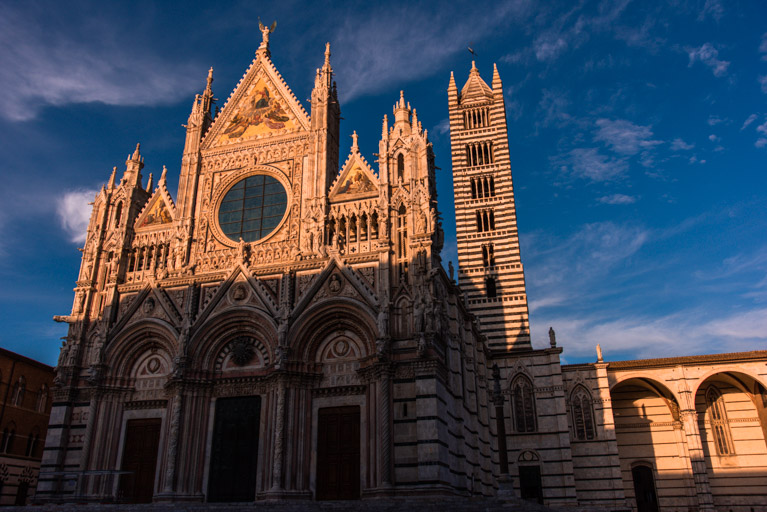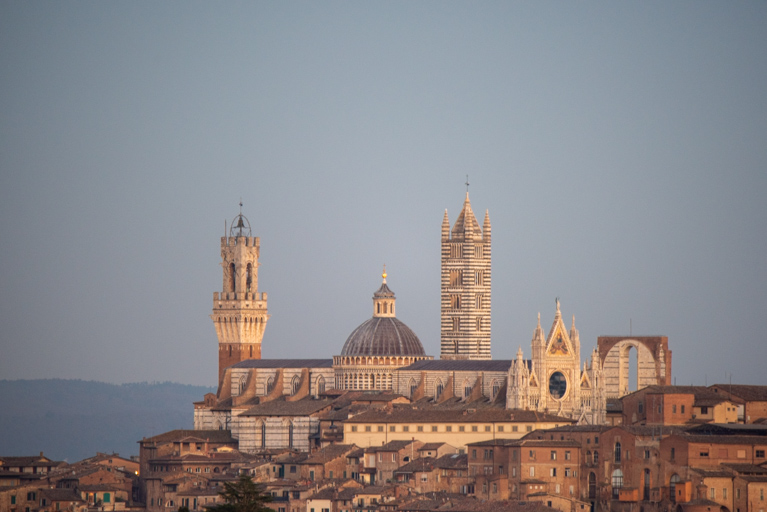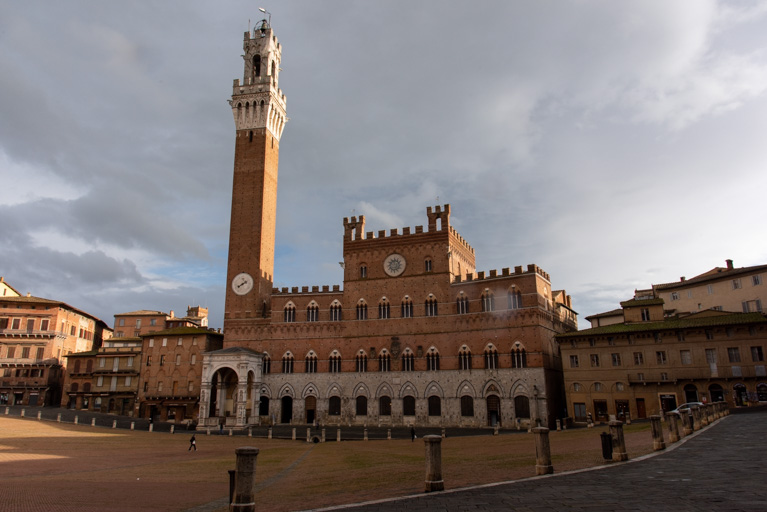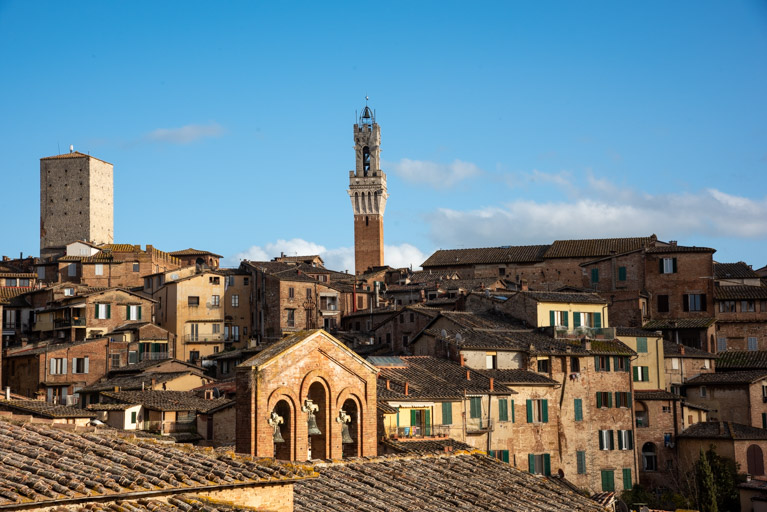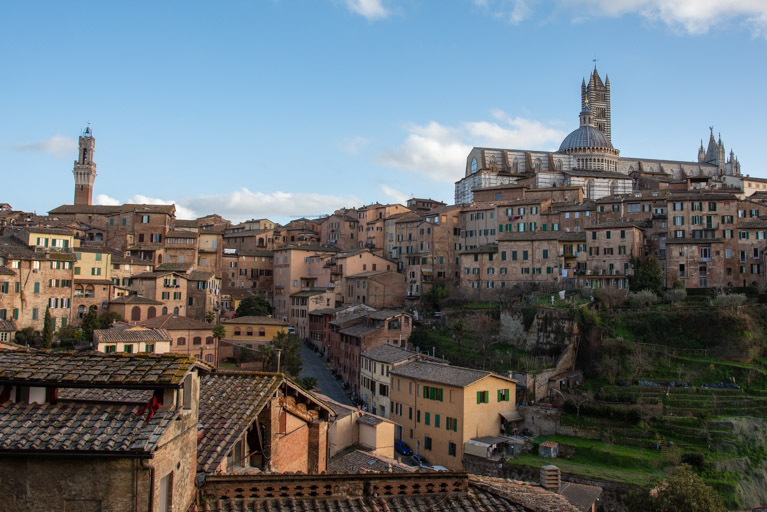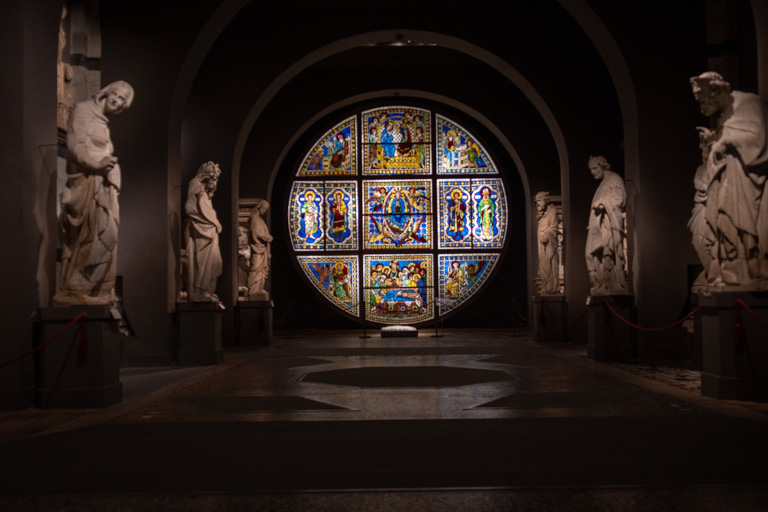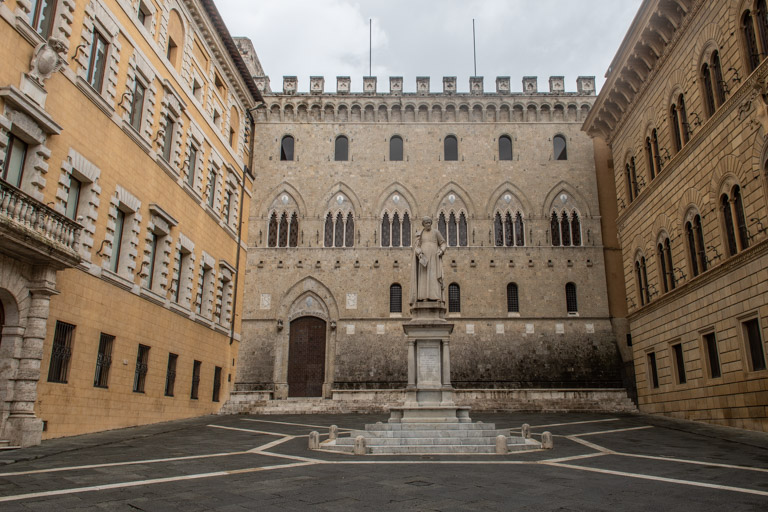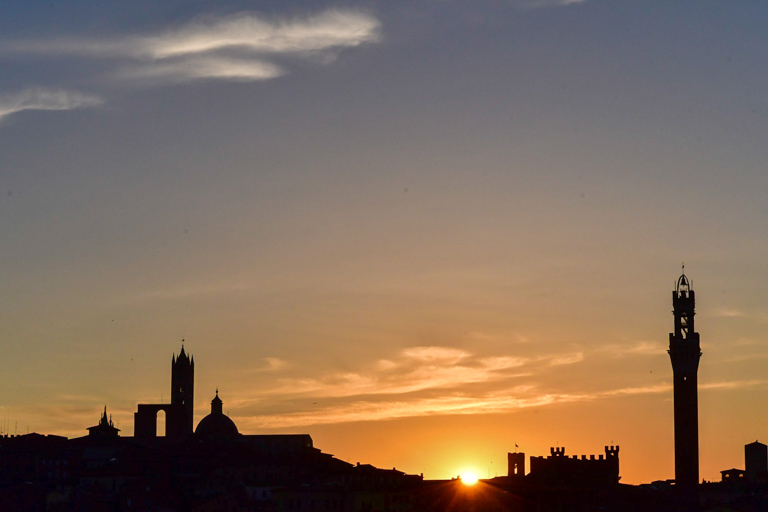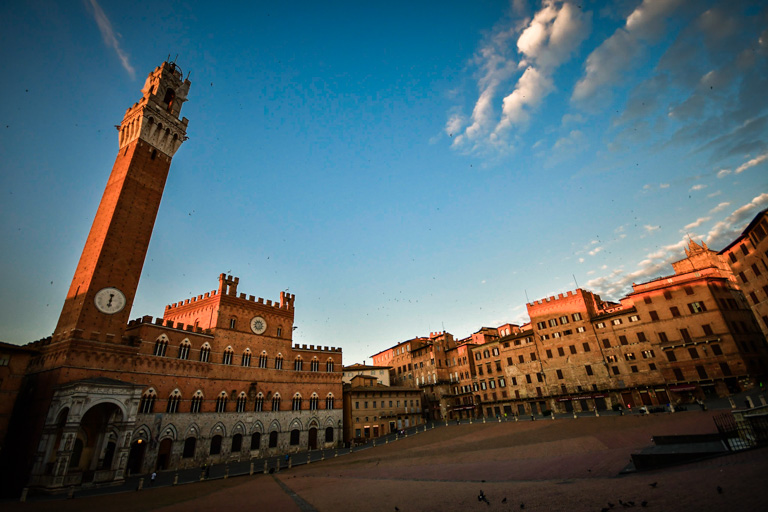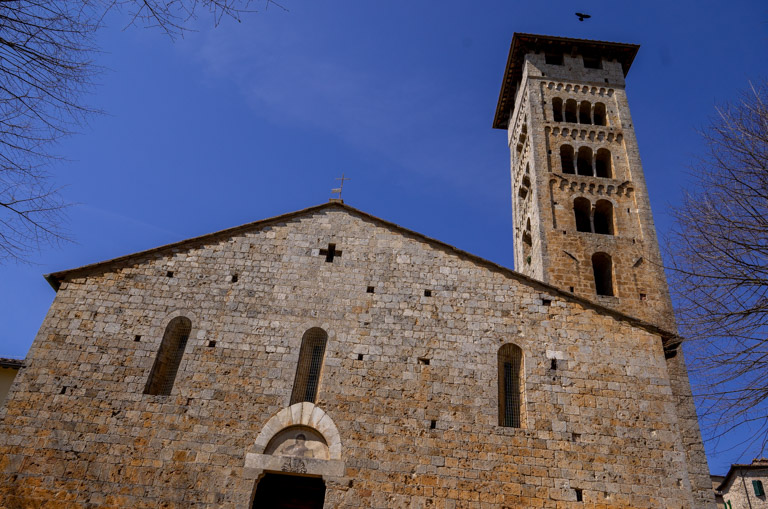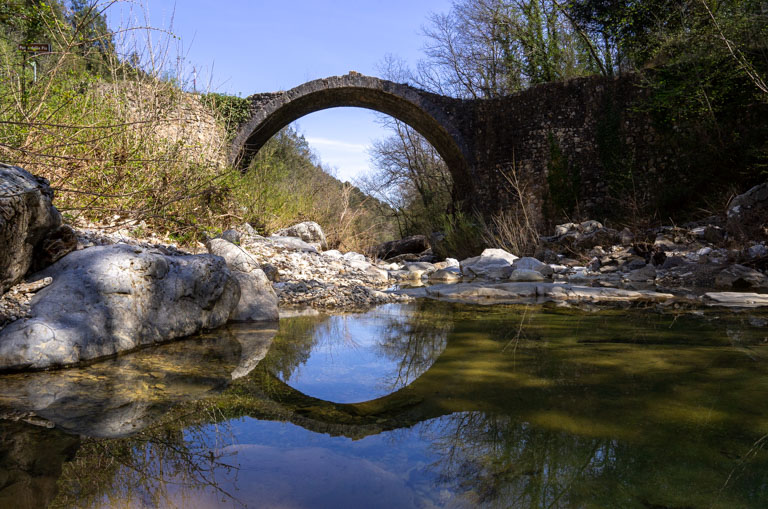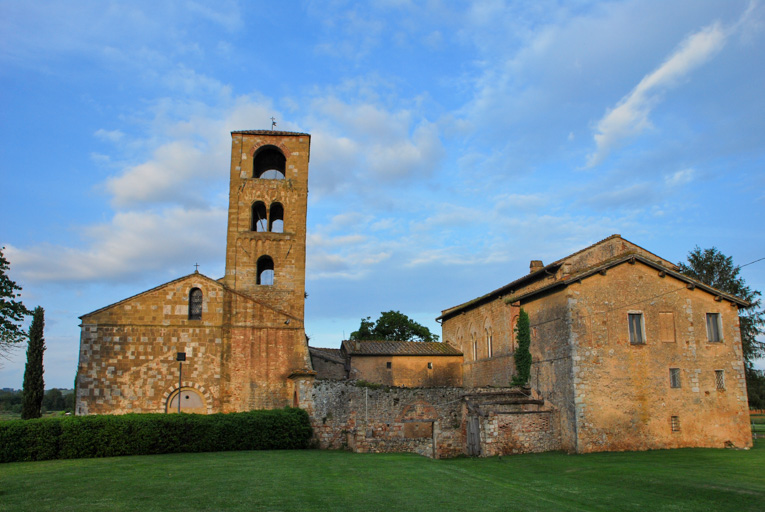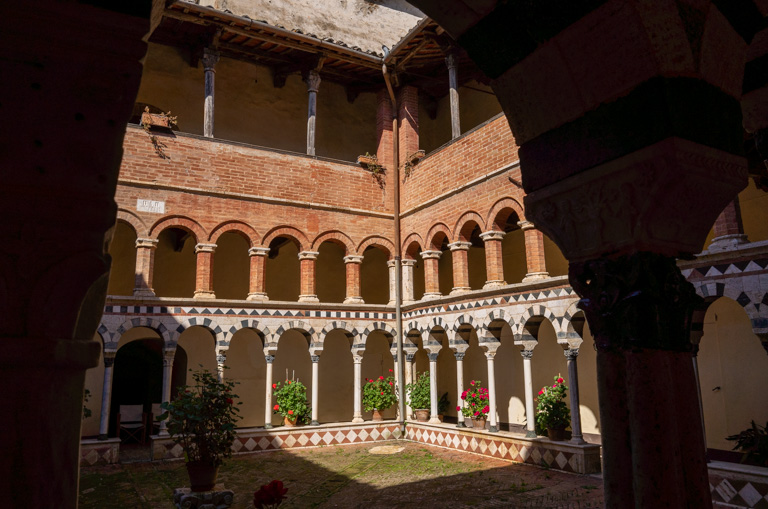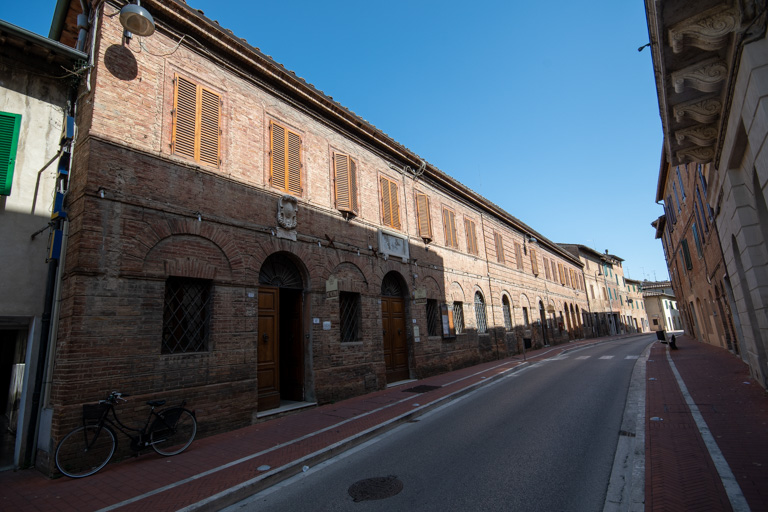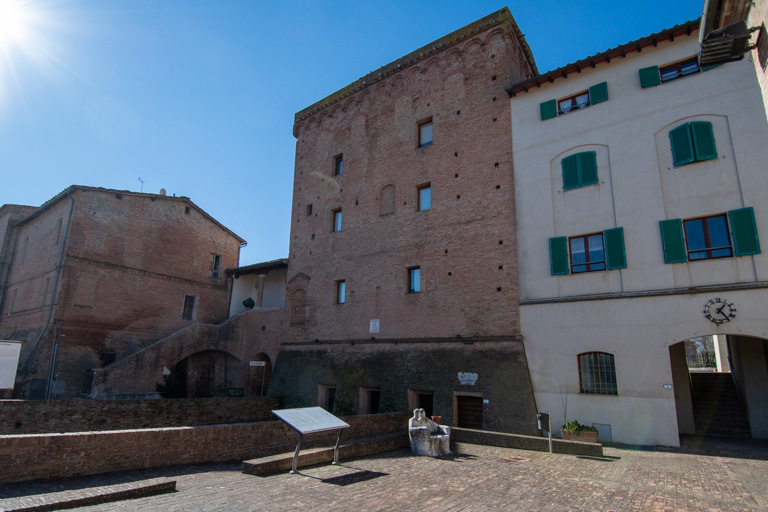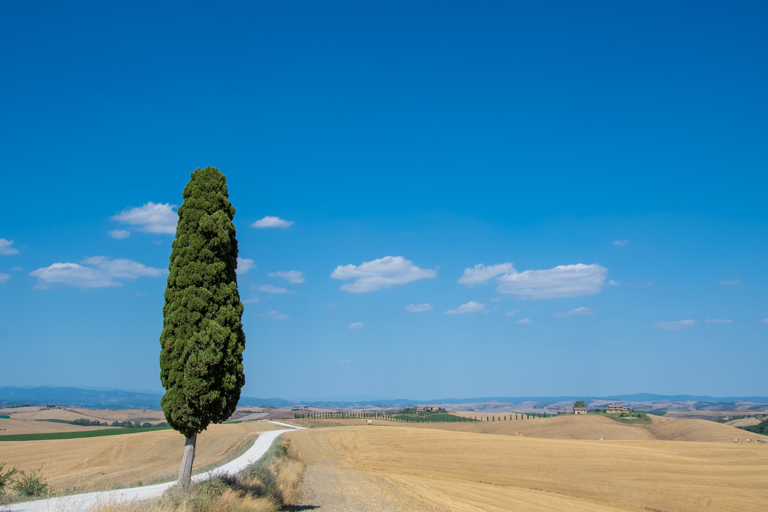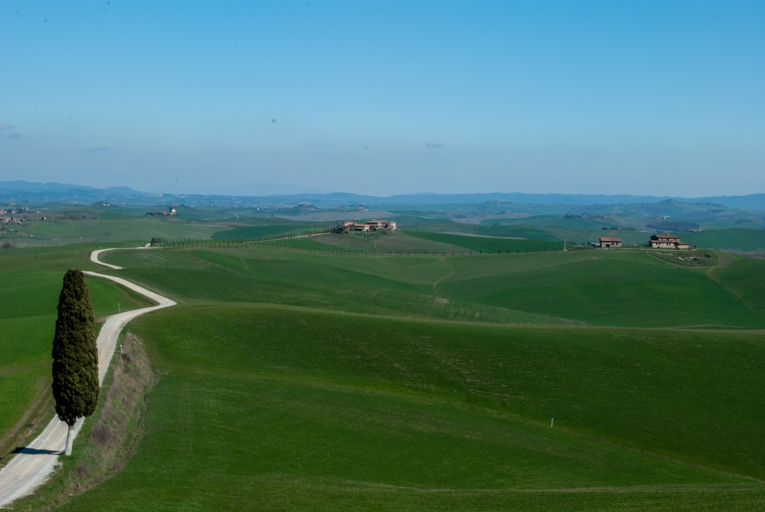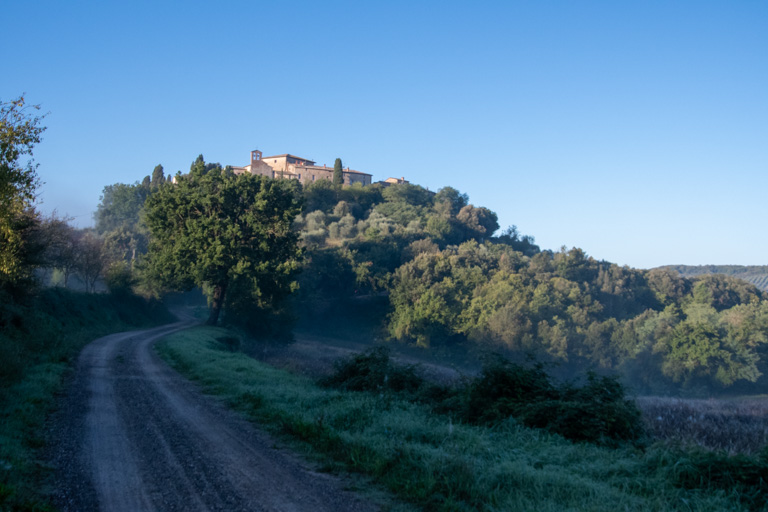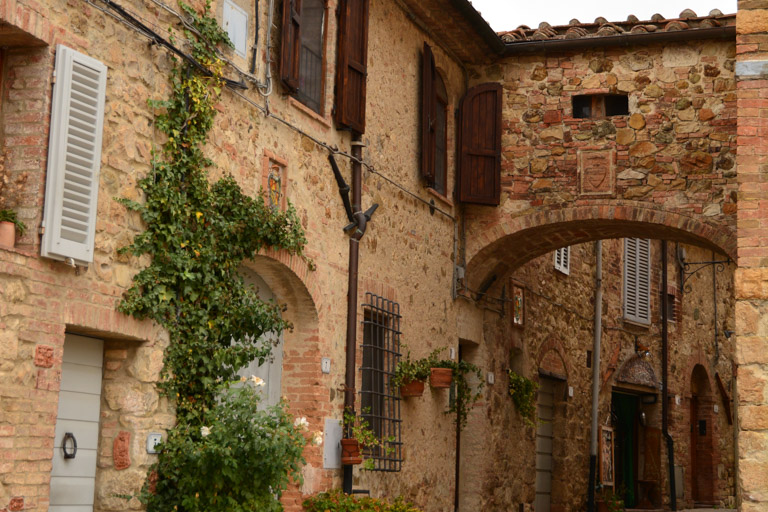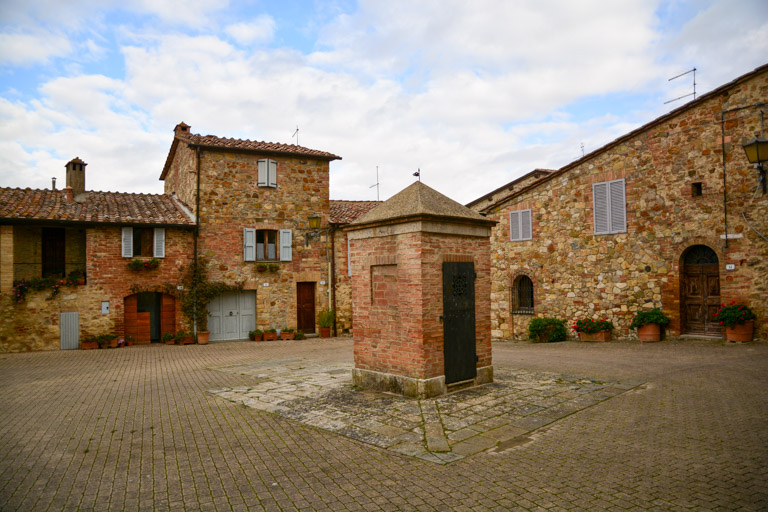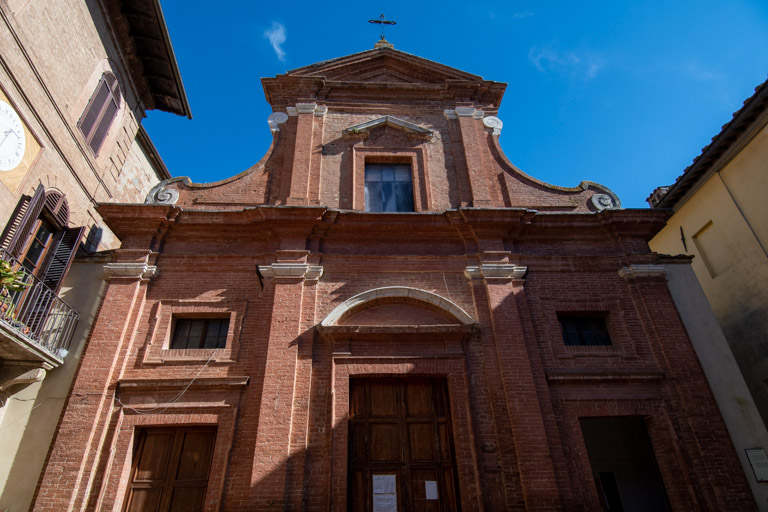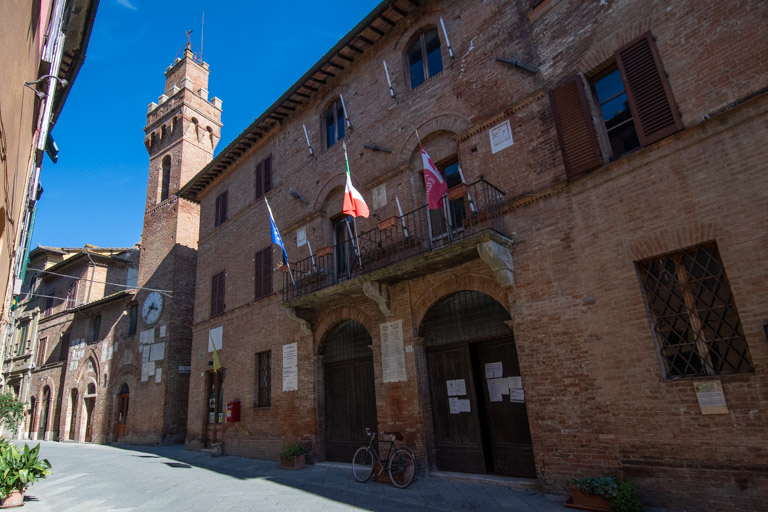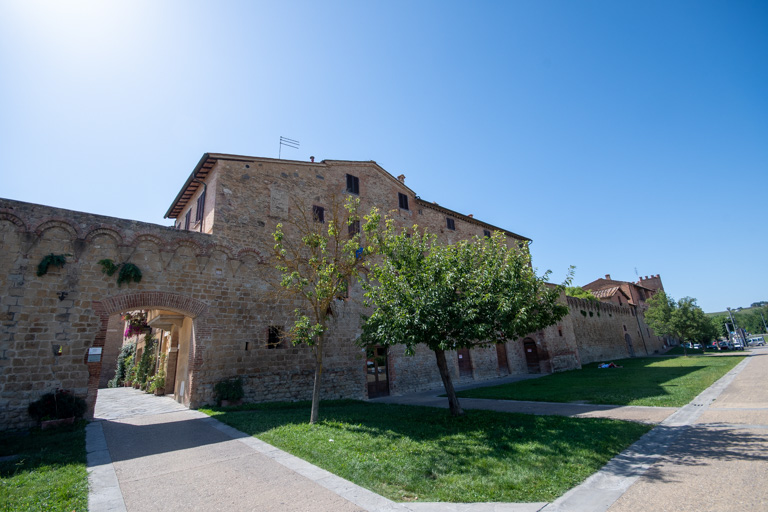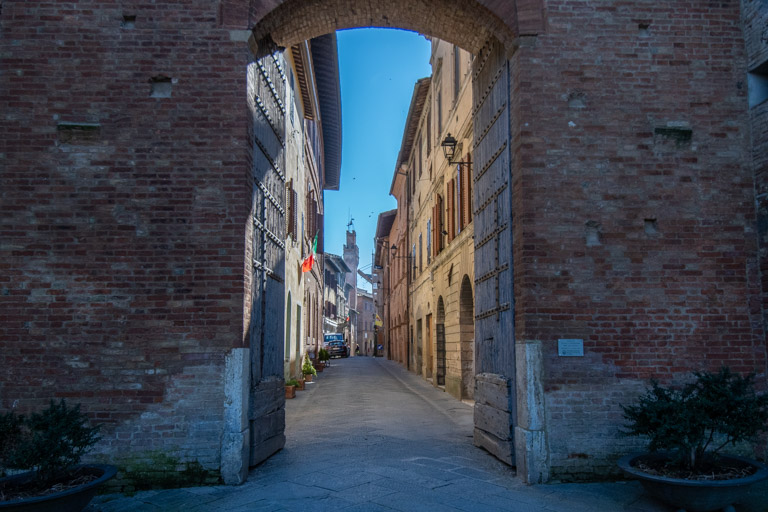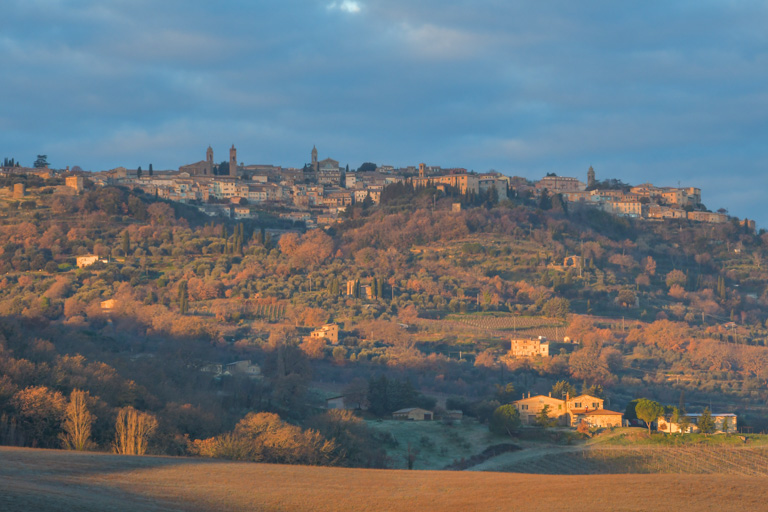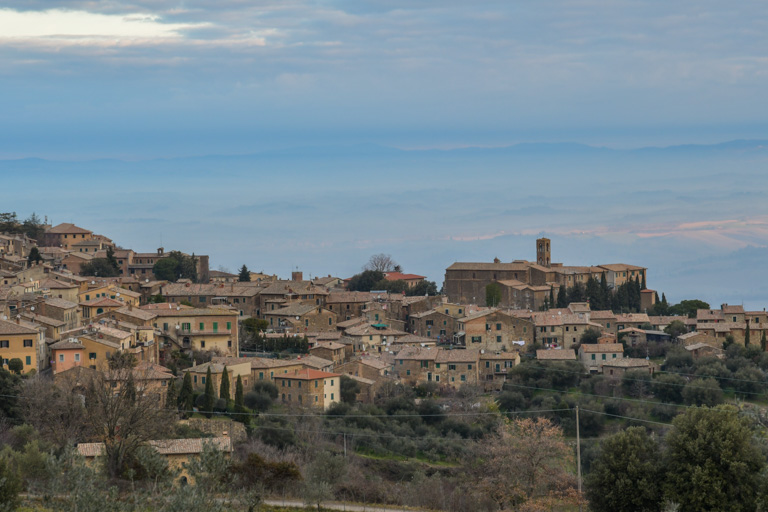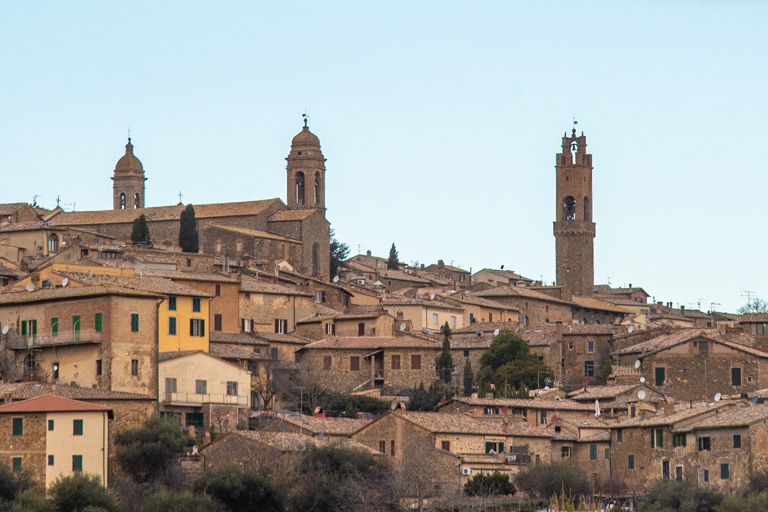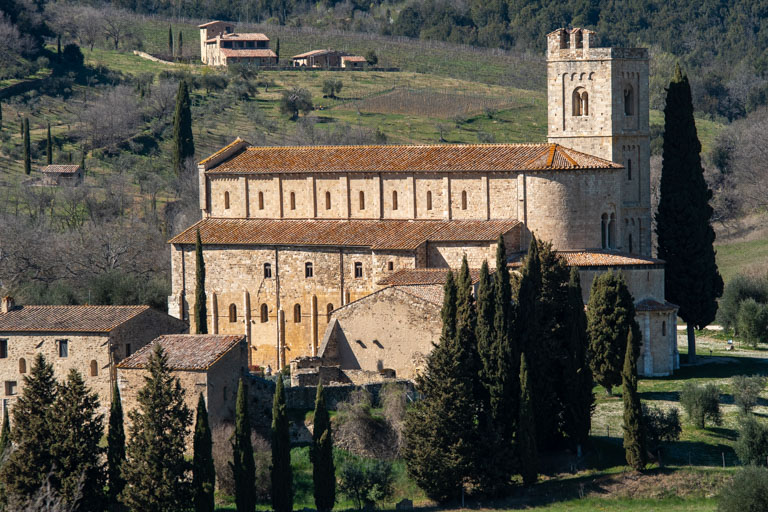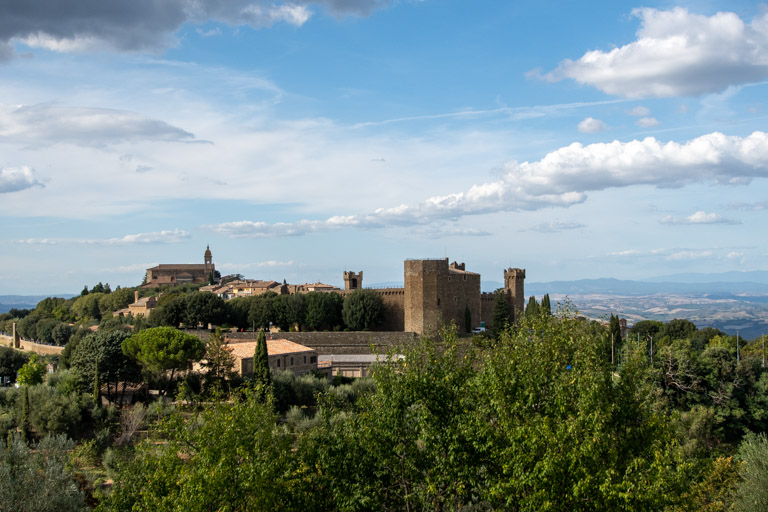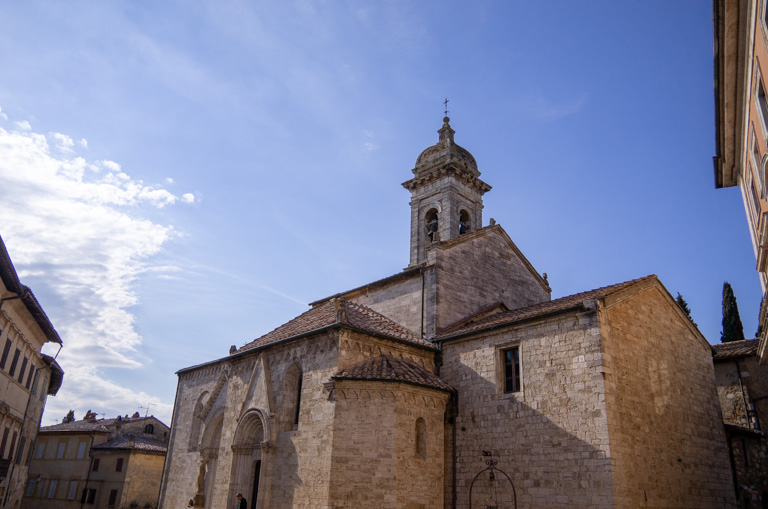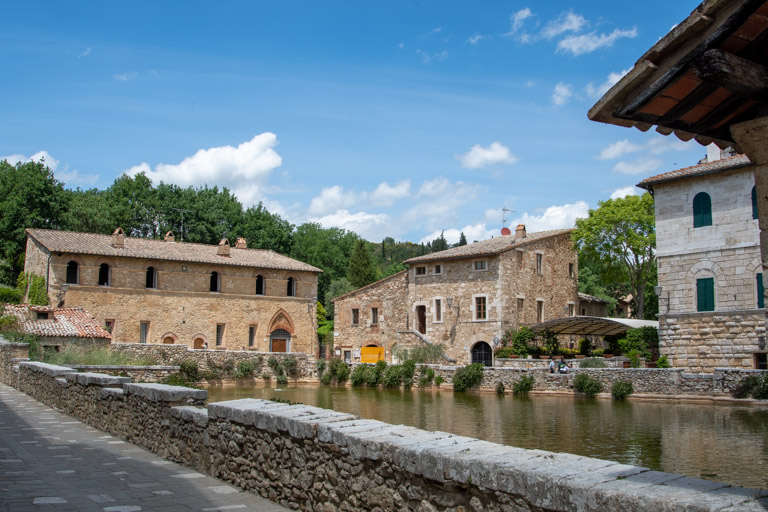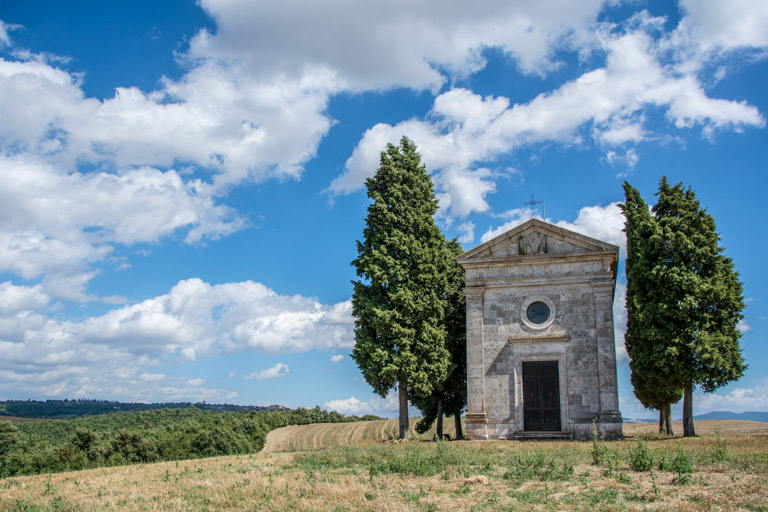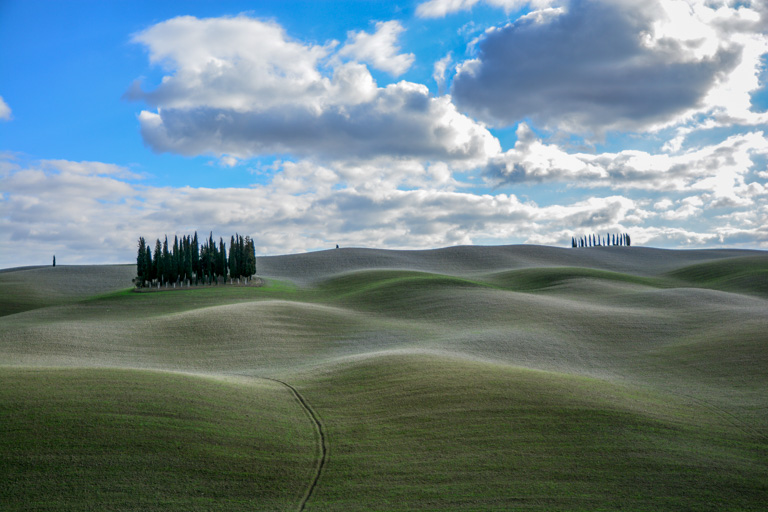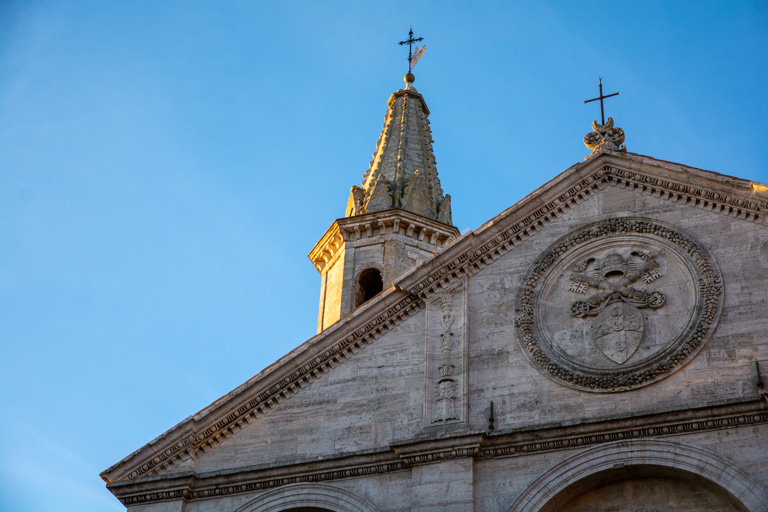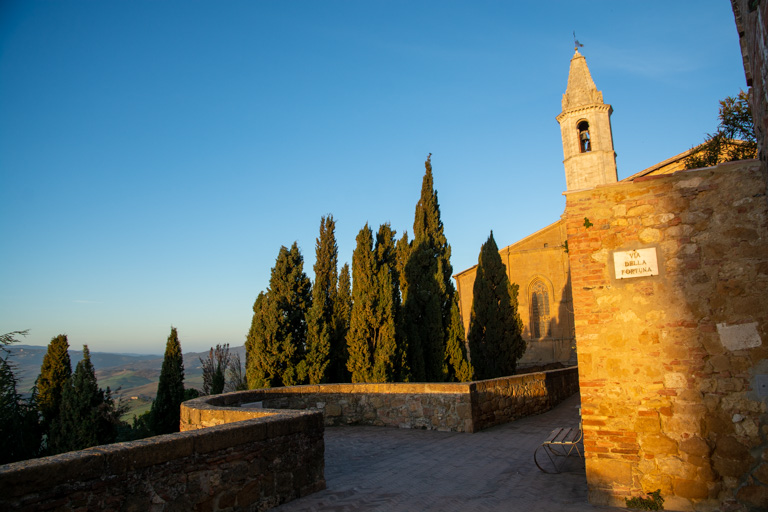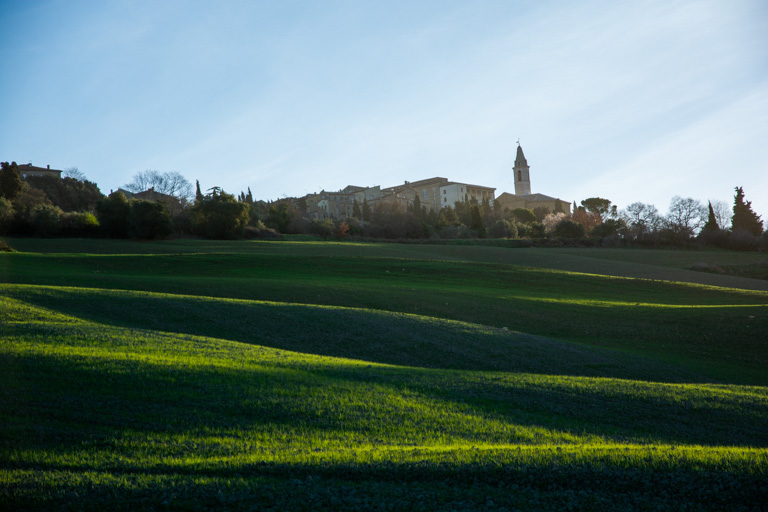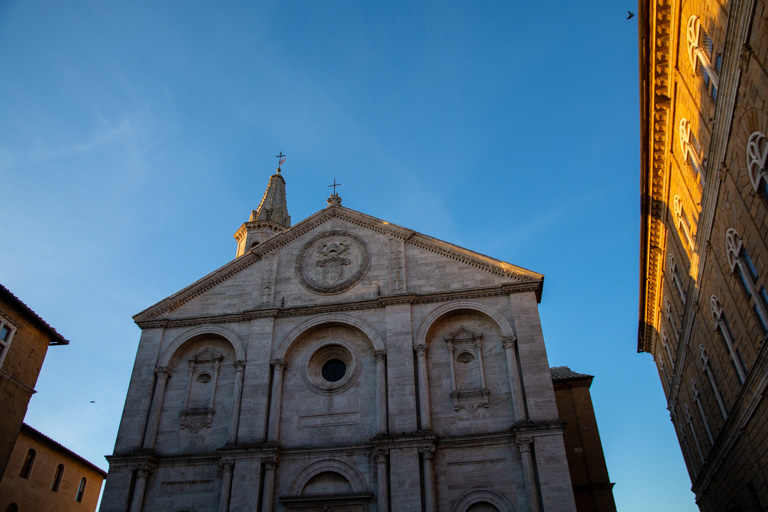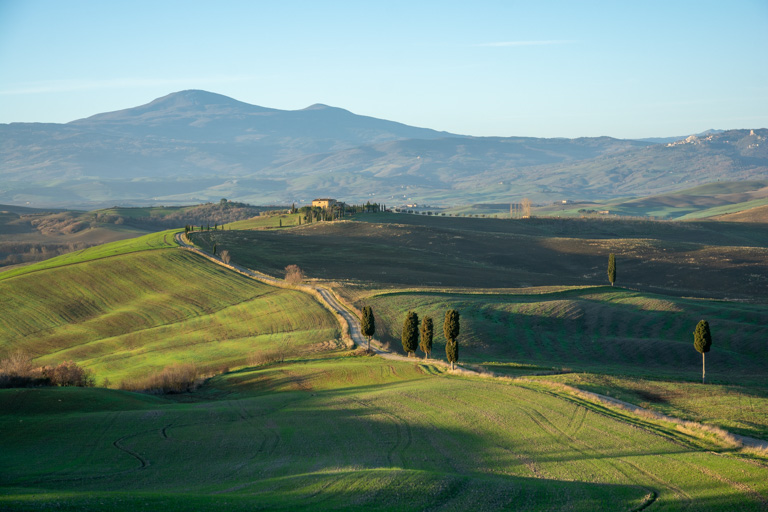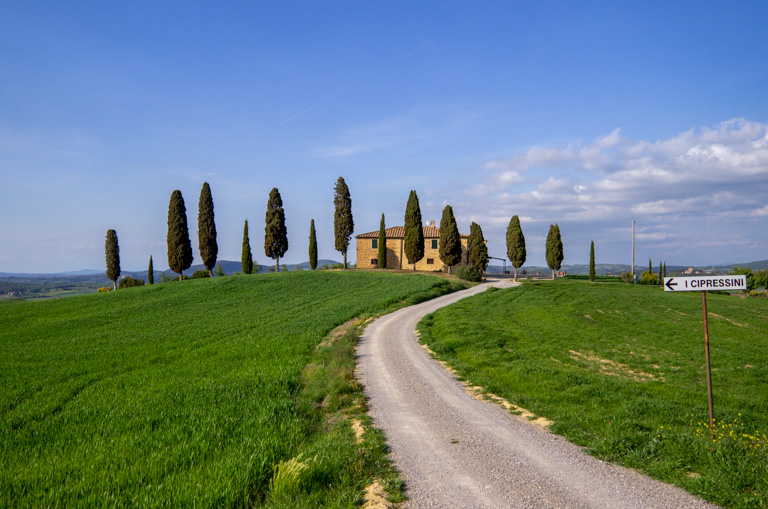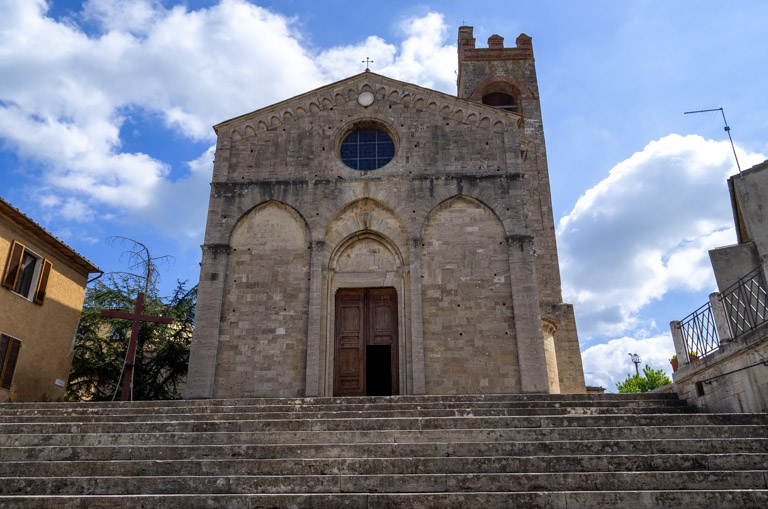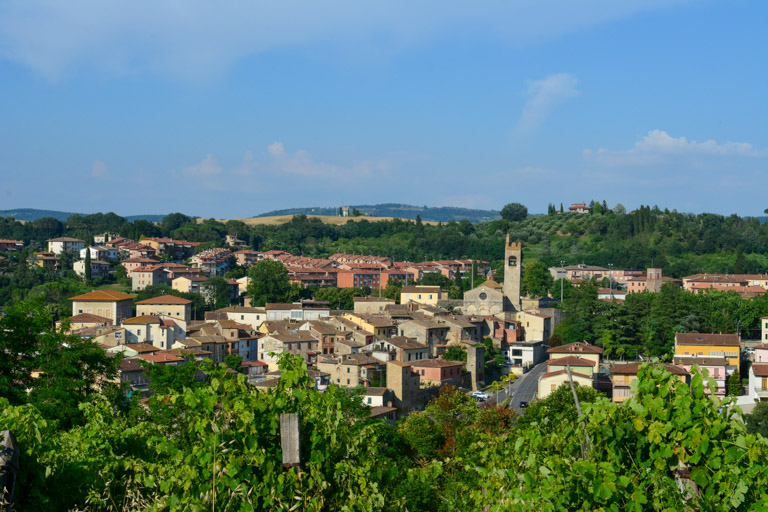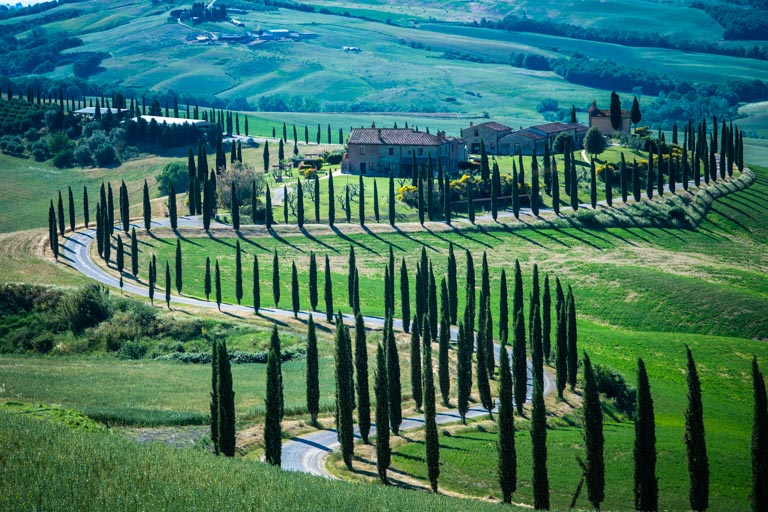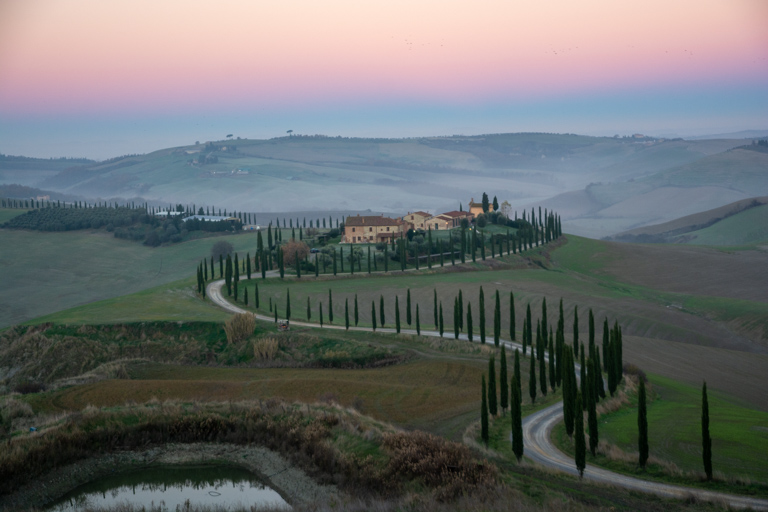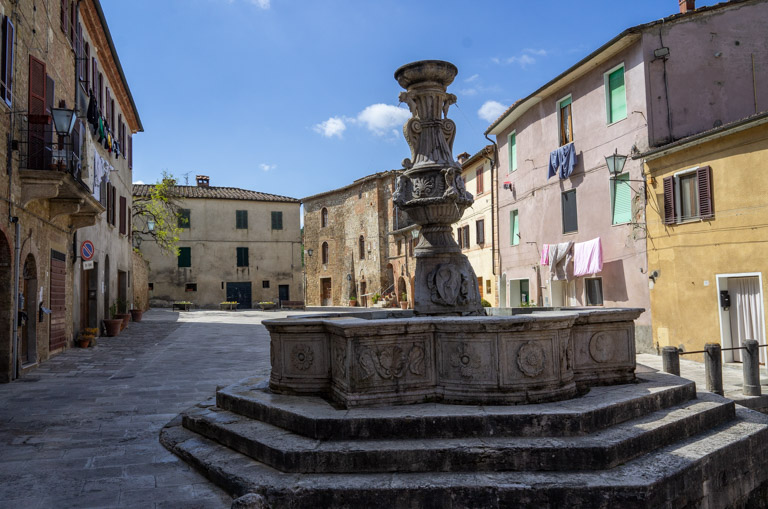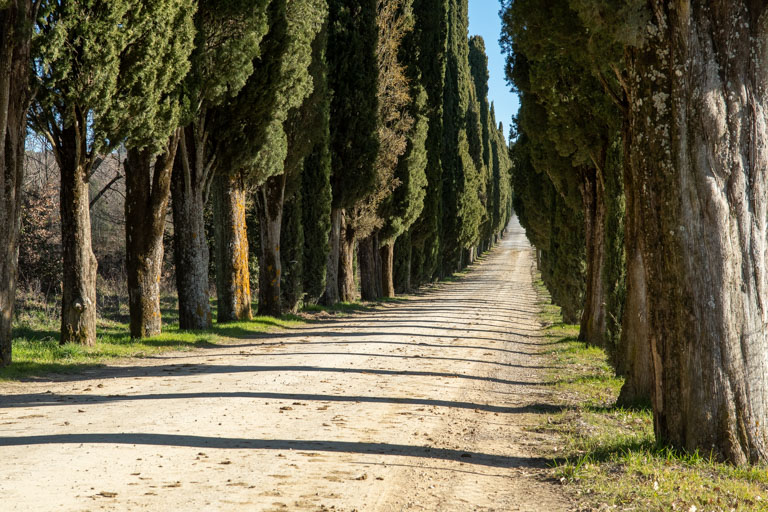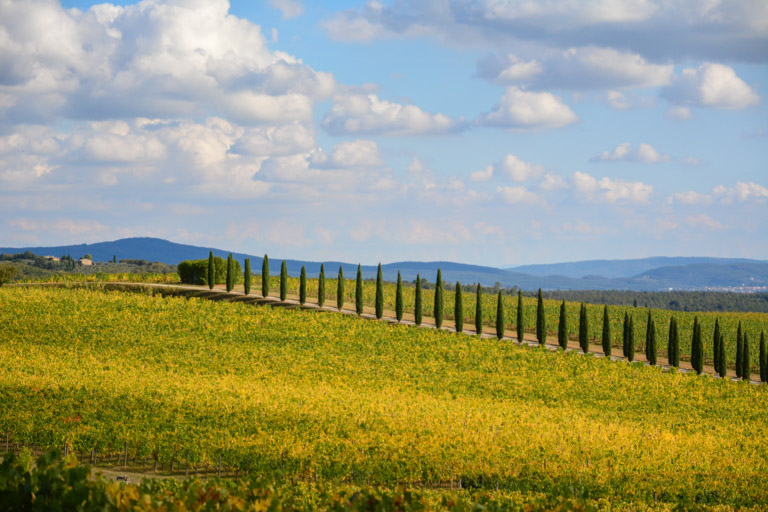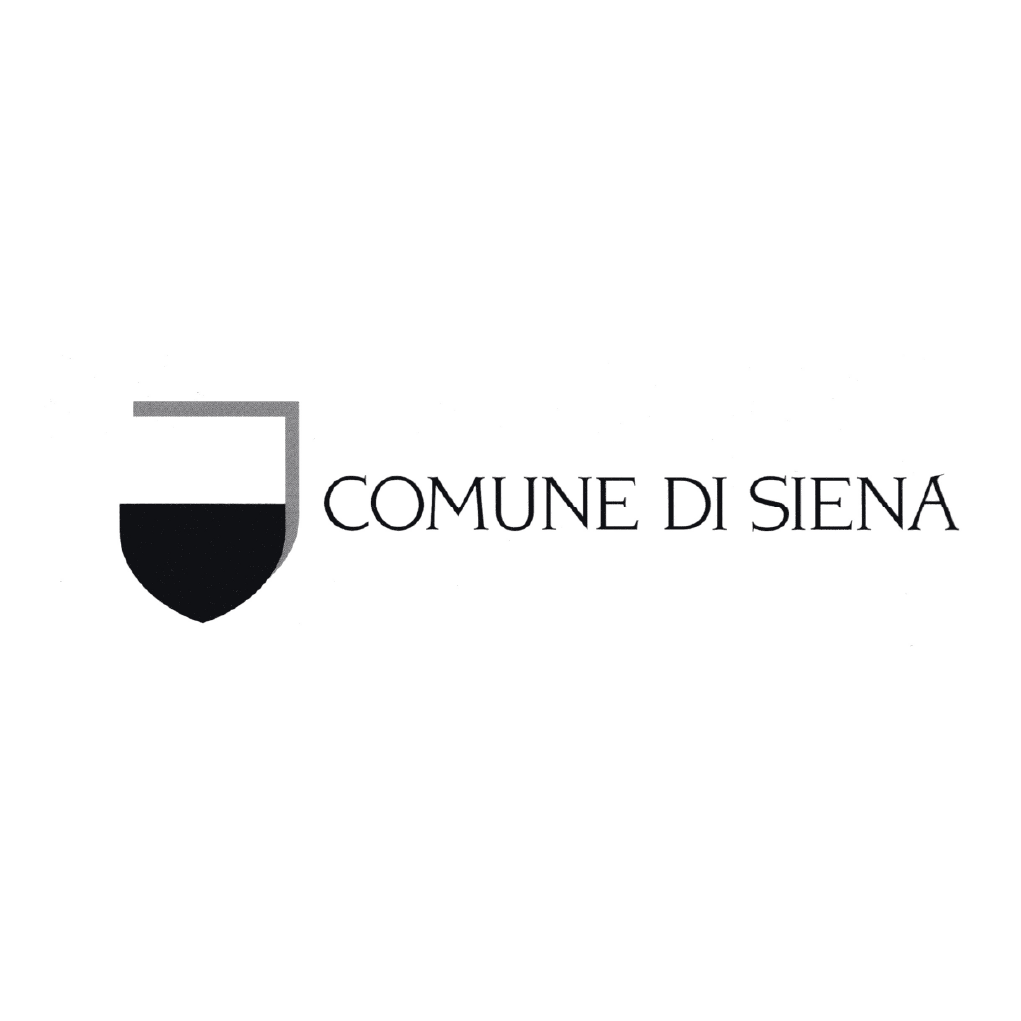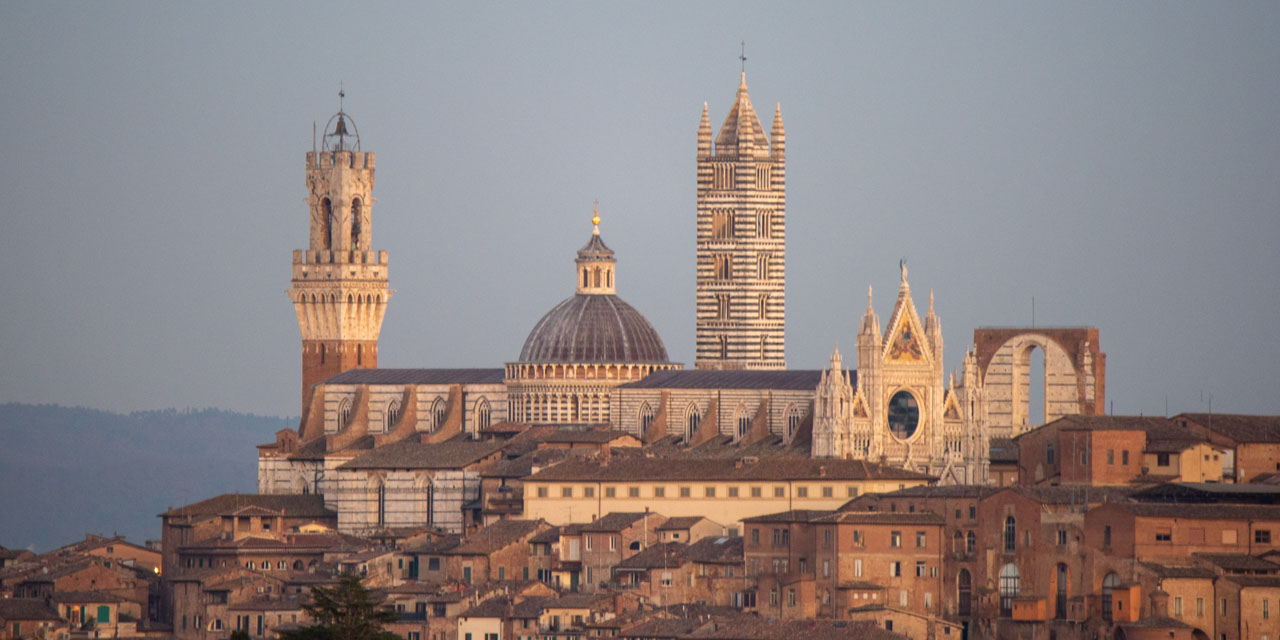
136 km - Altitude gain mt
Strade Bianche Women Elite
Saturday 8 March 2025 136km
Total time: 3:49:04 Withdrawals: 86
of arrival

VOLLERING Demi
FDJ-SUEZ
3:49:04

VAN DER BREGGEN Anna
TEAM SD WORX
+ 0:18

FERRAND-PREVOT Pauline
TEAM VISMA - LEASE A BIKE
+ 01:42
learn more
technical info
profile
map
technical info
Percorso molto mosso e ondulato sia sul piano planimetrico che altimetrico, privo di lunghe salite, ma costellato di strappi più o meno ripidi specie su sterrato. Sono presenti circa 50 km di strade sterrate divise in 13 settori (tutti in comune con la corsa dei professionisti) con fondo ben tenuto, ben battuto, privo di incursioni erbose e con scarso brecciolino in superficie.
Partenza da Siena (zona Stadio/Fortezza Medicea), primi chilometri ondulati su asfalto fino a raggiungere il 1° settore sterrato (4.4 km) perfettamente rettilineo con una sola curva a metà e costantemente in lieve discesa.
Pochi chilometri separano dal 2° settore (4.8 km), prima vera asperità della corsa che presenta un lungo tratto in salita con pendenze anche oltre il 10%. Si raggiunge quindi Radi dove si incontra il 3° settore (4.4 km) e subito dopo il 4° settore “La Piana” (6.4 km) altimetricamente meno impegnativo che porta a Ponte d’Arbia dove dopo poche centinaia di metri sulla “Cassia” si affronta l’inedito settore di Serravalle (9.3 km) che termina appena prima dell’inizio del settore successivo (San Martino in Grania, 9.5 km) in mezzo alle crete senesi. Un settore sterrato lungo e con un susseguirsi di leggeri saliscendi nella prima parte per concludersi con una scalata a tornanti che immette nuovamente nell’asfalto. Segue un tratto asfaltato con poche difficoltà fino alla immissione, a Monteaperti, nel percorso classico maschile con il medesimo impegnativo finale.
Subito dopo Monteaperti c’è il 7° settore di soli 600 m, ma con uno strappo sterrato con pendenze a doppia cifra. Si ritrova poi l’asfalto a Vico d’Arbia dove si entra nel circuito di 30 km.
Dopo Pieve a Bozzone il circuito propone il 8° settore (Colle Pinzuto 2.4 km) con pendenze fino al 15%. Pochi chilometri dopo è posto l’9° settore delle Tolfe (1.1 km) con una sequenza di discesa secca seguita da una ripida risalita (pendenza max 18%). Poco dopo le Tolfe, al primo passaggio, si entra nell’inedito settore della Strada del Castagno (10° settore, 700 m) che porta ad alcuni passaggi impegnativi su asfalto fino a Pontignano, Ponte a Bozzone e San Giovanni a Cerreto dove si imbocca il 11° sterrato (Montechiaro 3.3 km) percorso nelle prime edizioni della corsa. Al termine di questo settore, a Vico d’Arbia, si conclude l’anello
Si percorrono quindi una seconda volta i settori di Colle Pinzuto (12°) e delle Tolfe (13°) svoltando verso Siena quando restano poco più di 10 km all’arrivo a Siena.
Ultimi km
Gli ultimi km si snodano per la prima parte all’esterno dell’abitato di Siena su strade larghe e lunghi rettifili collegati tra loro da ampie curve, prima in discesa e poi in leggera salita fino ai 2 km dall’arrivo dove viene imboccata la via Esterna di Fontebranda con pendenze fino al 9%. A 900 m dall’arrivo si supera la Porta di Fontebranda e inizia la pavimentazione lastricata. La pendenza supera il 10% fino a raggiungere attorno ai 500 m dall’arrivo, in via Santa Caterina, punte del 16%. Segue una svolta decisa a destra nella via delle Terme e l’immissione in via Banchi di Sotto. Dai 300 m la strada è sempre in leggera discesa. Ai 150 m svolta a destra in via Rinaldini. Ai 70 m si entra nel Campo, ultimi 30 m in discesa al 7%, traguardo pianeggiante.
start / finish
final kilometres
itinerary timetable
tourist info
Host city:
Siena
Siena
Siena is nestled among the gentle Tuscan hills. Here, it feels as if time has stopped at the 13th century, when the city’s artistic and architectural heritage started to develop, earning Siena its endless renown. It has been on the UNESCO World Heritage List since 1995, owing to its well-preserved mediaeval structure. The main square, Piazza del Campo, is the mandatory starting point to describe the city. The square has a unique shell shape, and gently slopes towards the centre. This is where the famous Palio takes place: every year, in summer, the different Contrade (city quarters) challenge each other in a compelling horse race. All around are a number of monumental buildings, such as Palazzo Sansedoni and Palazzo Pubblico. Towering over the square is the majestic Torre del Mangia, built in the 1340s. Soaring an impressive 102 metres, it is just as tall as the Duomo belfry, to symbolize the balance between worldly and divine power. But there is more to Siena than just Piazza del Campo, including little streets and alleys teeming with little shops and craft stores where you can buy local handmade products or taste the famous cantucci cookies with a glass of Vin Santo. Throughout the narrow alleys, all the way to the wide Piazza del Campo, you can actually feel the real atmosphere of this city – contemporary yet ancient, monumental yet lively, all of which makes it the perfect setting for the start and finish of this iconic bicycle race. (Ph. Credits Antonio Cinotti)
Sovicille
Lying at the southern slopes of the Montagnola Senese, Sovicille is the Tuscan town with the highest concentration of parish churches, abbeys, castles and villas. Valuable examples of the Romanesque style are the Pieve (parish church) of Ponte allo Spino, Ponte della Pia, and the polychrome cloister of the Abbey of Torri. The fairy-tale castle of Celsa and the grandiose Villa di Cetinale (a former possession of the Chigi family) are bound to leave you breathless with their charm and grandeur. (Ph. Credits Antonio Cinotti)
Monteroni d'Arbia
The Via Francigena runs through the entire municipal territory of Monteroni d’Arbia. Many historical landmarks can be found along this ancient route, including the castle of Lucignano d’Arbia and its parish church, which already existed back in 913 a.D., and the famous Grancia di Cuna, a majestic fortified farm built in 1314. (Ph. Credits Antonio Cinotti)
Murlo
Murlo is a little, well-preserved mediaeval village lying at the heart of an unspoilt territory. Its inhabitants were found to be the actual descendants of the ancient Etruscans. The village is best known for being home to a unique Etruscan settlement on the surrounding hills: a large princely building surrounded by craft workshops, one of the major findings about this civilisation. (Ph. Credits Antonio Cinotti)
Buonconvento
The village of Buonconvento is still surrounded by the ancient defensive walls, and has retained its original mediaeval appearance. Major landmarks include the belfry (Torre Civica) of the ancient government palace, Palazzo Podestarile. However, wandering the streets of the town is just as evocative, especially in September, when the famous Sagra della Valdarbia brings the love for good food, music, arts and literature together. (Ph. Credits Antonio Cinotti)
Montalcino
Founded by the Etruscans and best known for Brunello wine, Montalcino is a lovely village lying at the mouth of Val d’Orcia. Major landmarks include the 14th century pentagonal fortress with its towers, and a museum housing a collection of late mediaeval art. The Abbey of Sant’Antimo, one of the major examples of Tuscan Romanesque architecture, is a must-see. (Ph. Credits Antonio Cinotti)
San Quirico d’Orcia
San Quirico d’Orcia lies at the heart of a World Heritage landscape that embodies the essence of the Val d’Orcia. The impressive Horti Leonini, created around 1580, are the most popular attraction. Major architectural landmarks also include the Osenna collegiate or parish church (dating back to the 12th-13th century). Bagno Vignoni, the only hamlet in San Quirico d’Orcia, is home to Piazza delle Sorgenti, a large, rectangular 16th century hot spring which is definitely worth a visit. (Ph. Credits Antonio Cinotti)
Pienza
A UNESCO World Heritage site since 1996, Pienza was hometown to Pope Pius II, who considered it the “ideal” city of the Renaissance. The projects that were conceived at that time are a significant example of the rational urban architecture of the Italian Renaissance, although not all of them were actually implemented. Taking a walk through Piazza Pio II to visit Palazzo Piccolomini and the cathedral is something you cannot miss. (Ph. Credits Antonio Cinotti)
Asciano
Lying at the heart of the Crete Senesi, and surrounded by breath-taking landscapes, Asciano is an ancient Etruscan village that experienced its greatest splendour during the Middle Ages. The old town centre is a treasure trove of art and history, where traditions and legends merge inseparably. (Ph. Credits Antonio Cinotti)
Castelnuovo Berardenga
Castelnuovo Berardenga is the southernmost town of the Chianti area. Its territory is a unique combination of gentle slopes and uneven hills, guarded by castles, churches and fortifications, with cypress-lined alleys leading the way. In 1260, the battle of Monteaperti, won by Siena and its allies against Florence, marked the beginning of the Ghibelline rule over Tuscany, and invested Siena with a political and economical predominant role, both in Italy and in Europe. (Ph. Credits Antonio Cinotti)
Siena
Siena
Siena is nestled among the gentle Tuscan hills. Here, it feels as if time has stopped at the 13th century, when the city’s artistic and architectural heritage started to develop, earning Siena its endless renown. It has been on the UNESCO World Heritage List since 1995, owing to its well-preserved mediaeval structure. The main square, Piazza del Campo, is the mandatory starting point to describe the city. The square has a unique shell shape, and gently slopes towards the centre. This is where the famous Palio takes place: every year, in summer, the different Contrade (city quarters) challenge each other in a compelling horse race. All around are a number of monumental buildings, such as Palazzo Sansedoni and Palazzo Pubblico. Towering over the square is the majestic Torre del Mangia, built in the 1340s. Soaring an impressive 102 metres, it is just as tall as the Duomo belfry, to symbolize the balance between worldly and divine power. But there is more to Siena than just Piazza del Campo, including little streets and alleys teeming with little shops and craft stores where you can buy local handmade products or taste the famous cantucci cookies with a glass of Vin Santo. Throughout the narrow alleys, all the way to the wide Piazza del Campo, you can actually feel the real atmosphere of this city – contemporary yet ancient, monumental yet lively, all of which makes it the perfect setting for the start and finish of this iconic bicycle race.
Sovicille
Lying at the southern slopes of the Montagnola Senese, Sovicille is the Tuscan town with the highest concentration of parish churches, abbeys, castles and villas. Valuable examples of the Romanesque style are the Pieve (parish church) of Ponte allo Spino, Ponte della Pia, and the polychrome cloister of the Abbey of Torri. The fairy-tale castle of Celsa and the grandiose Villa di Cetinale (a former possession of the Chigi family) are bound to leave you breathless with their charm and grandeur. (Ph. Credits Antonio Cinotti)
Monteroni d’Arbia
The Via Francigena runs through the entire municipal territory of Monteroni d’Arbia. Many historical landmarks can be found along this ancient route, including the castle of Lucignano d’Arbia and its parish church, which already existed back in 913 a.D., and the famous Grancia di Cuna, a majestic fortified farm built in 1314. (Ph. Credits Antonio Cinotti)
Murlo
Murlo is a little, well-preserved mediaeval village lying at the heart of an unspoilt territory. Its inhabitants were found to be the actual descendants of the ancient Etruscans. The village is best known for being home to a unique Etruscan settlement on the surrounding hills: a large princely building surrounded by craft workshops, one of the major findings about this civilisation. (Ph. Credits Antonio Cinotti)
Buonconvento
The village of Buonconvento is still surrounded by the ancient defensive walls, and has retained its original mediaeval appearance. Major landmarks include the belfry (Torre Civica) of the ancient government palace, Palazzo Podestarile. However, wandering the streets of the town is just as evocative, especially in September, when the famous Sagra della Valdarbia brings the love for good food, music, arts and literature together. (Ph. Credits Antonio Cinotti)
Montalcino
Founded by the Etruscans and best known for Brunello wine, Montalcino is a lovely village lying at the mouth of Val d’Orcia. Major landmarks include the 14th century pentagonal fortress with its towers, and a museum housing a collection of late mediaeval art. The Abbey of Sant’Antimo, one of the major examples of Tuscan Romanesque architecture, is a must-see. (Ph. Credits Antonio Cinotti)
San Quirico d’Orcia
San Quirico d’Orcia lies at the heart of a World Heritage landscape that embodies the essence of the Val d’Orcia. The impressive Horti Leonini, created around 1580, are the most popular attraction. Major architectural landmarks also include the Osenna collegiate or parish church (dating back to the 12th-13th century). Bagno Vignoni, the only hamlet in San Quirico d’Orcia, is home to Piazza delle Sorgenti, a large, rectangular 16th century hot spring which is definitely worth a visit. (Ph. Credits Antonio Cinotti)
Pienza
A UNESCO World Heritage site since 1996, Pienza was hometown to Pope Pius II, who considered it the “ideal” city of the Renaissance. The projects that were conceived at that time are a significant example of the rational urban architecture of the Italian Renaissance, although not all of them were actually implemented. Taking a walk through Piazza Pio II to visit Palazzo Piccolomini and the cathedral is something you cannot miss. (Ph. Credits Antonio Cinotti)
Asciano
Lying at the heart of the Crete Senesi, and surrounded by breath-taking landscapes, Asciano is an ancient Etruscan village that experienced its greatest splendour during the Middle Ages. The old town centre is a treasure trove of art and history, where traditions and legends merge inseparably. (Ph. Credits Antonio Cinotti)
Castelnuovo Berardenga
Castelnuovo Berardenga is the southernmost town of the Chianti area. Its territory is a unique combination of gentle slopes and uneven hills, guarded by castles, churches and fortifications, with cypress-lined alleys leading the way. In 1260, the battle of Monteaperti, won by Siena and its allies against Florence, marked the beginning of the Ghibelline rule over Tuscany, and invested Siena with a political and economical predominant role, both in Italy and in Europe. (Ph. Credits Antonio Cinotti)


